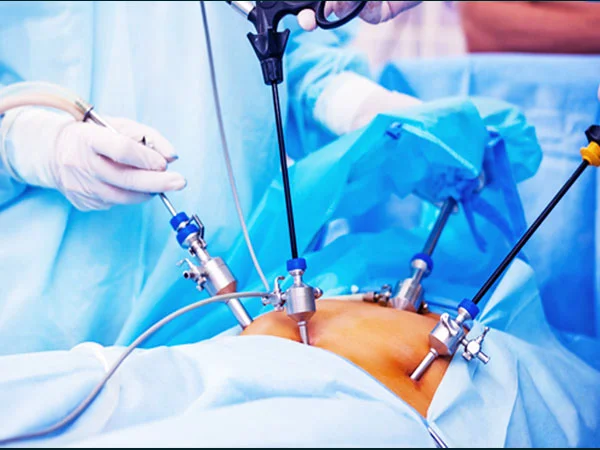
Advanced Laparoscopic Surgeries.
Advanced laparoscopic surgeries refer to minimally invasive surgical procedures performed using laparoscopic techniques that require advanced skills and expertise. Laparoscopic surgery is a type of surgery that uses small incisions and specialised instruments to access and operate on internal organs.
Gynecologic Laparoscopy
Gynecologic laparoscopy is a minimally invasive surgical procedure that is used to diagnose and treat a variety of gynecologic conditions. It involves inserting a thin, lighted instrument called a laparoscope through a small incision in the abdomen, allowing the surgeon to view the pelvic organs.
During the procedure, the surgeon may also use other instruments inserted through additional small incisions to perform surgical procedures such as removing cysts or scar tissue, repairing a hernia, or removing an ectopic pregnancy.
Gynecologic laparoscopy is often preferred over traditional open surgery because it is less invasive, results in less pain and scarring, and allows for a quicker recovery time. It is typically performed on an outpatient basis under general anesthesia.
Some of the conditions that may be diagnosed and treated with gynecologic laparoscopy include endometriosis, ovarian cysts, pelvic adhesions, fibroids, and infertility. It is important to discuss the risks and benefits of this procedure with your healthcare provider to determine if it is the right option for your specific situation.
Procedure
The procedure is typically performed under general anesthesia, and several small incisions are made in the abdomen through which the laparoscope and other surgical instruments are inserted. Carbon dioxide gas is pumped into the abdomen to create a space for the surgeon to work, and the camera on the laparoscope allows the surgeon to view the internal organs on a monitor. The surgeon can manipulate the instruments to perform the necessary surgical procedures, and the incisions are then closed with sutures or surgical glue.
Laparoscopy is considered a minimally invasive procedure compared to traditional open surgery because it requires smaller incisions and causes less trauma to the surrounding tissue. This results in less pain and scarring, and a faster recovery time for patients. However, as with any surgical procedure, there are potential risks and complications associated with laparoscopy, including bleeding, infection, and injury to surrounding organs. It is important to discuss the risks and benefits of the procedure with a qualified healthcare provider before undergoing laparoscopy. On average this Laparoscopy costs between Rs 20,000 to 50,000 but it may vary Upon patient condition and health history.
Recovery
Recovery after laparoscopic surgery can vary depending on the specific procedure and individual patient factors. However, there are some general guidelines that can help patients understand what to expect during their recovery period.
In general, recovery from laparoscopic surgery is typically faster and less painful than recovery from traditional open surgery. This is because laparoscopic surgeries involves smaller incisions, which means there is less tissue damage and less pain.
Immediately after the Laparoscopic procedure, patients will typically spend a few hours in a recovery room under observation. The healthcare team will monitor vital signs, pain levels, and any potential complications.
Patients may experience some pain or discomfort after the surgery, which can be managed with pain medication prescribed by the healthcare provider. They may also have some bruising and swelling around the incision sites, which is normal.
In terms of activity level, patients will typically be advised to avoid heavy lifting, strenuous exercise, or other activities that could put stress on the incision sites for a few weeks after surgery. Patients should also avoid driving until they are cleared by their healthcare provider to do so.
Patients will need to follow a specific diet and activity plan during their recovery period. This may include consuming a liquid diet for a period of time, gradually reintroducing solid foods, and engaging in light physical activity like walking.
It’s important for patients to follow all post-operative instructions provided by their healthcare team, attend all follow-up appointments, and report any concerns or complications promptly. With proper care and attention, most patients can expect to recover fully within a few weeks after laparoscopic surgery.
